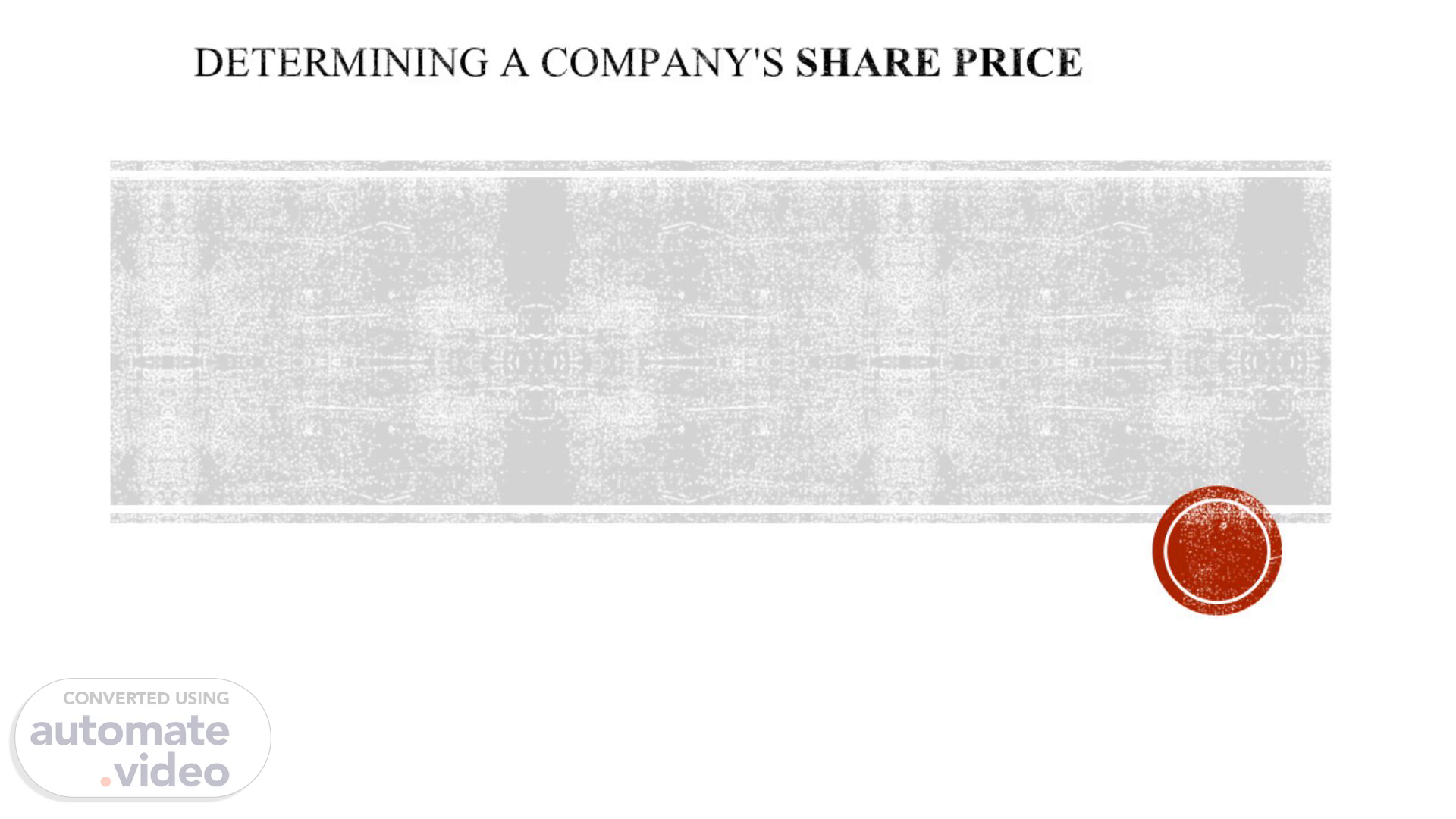Scene 1 (0s)
[Audio] Determining a company's share price Determining a company's share price is a fundamental aspect of investment analysis and corporate valuation. There are several methods to calculate or estimate the share price, each based on different assumptions and data inputs. The most common approaches include: 1. Income Approach Discounted Cash Flow (DCF) Analysis Dividend Discount Model (DDM) 2. Market Approach Comparable Companies Analysis (Comps) Precedent Transactions Analysis 3. Asset-Based Approach Net Asset Value (NAV) Liquidation Value.
Scene 2 (49s)
[Audio] INCOME APPROACH The income approach for determining share price is a method used to value a company's stock based on its future income or cash flow generation. This approach involves forecasting the company's future cash flows, discounting them to the present value, and then determining the value per share. One of the most common methods within the income approach is the Discounted Cash Flow (DCF) analysis. Here’s a breakdown of the income approach with an example: Steps in the Income Approach to Determining Share Price Project Future Free Cash Flows (FCF) Forecast the company’s free cash flows (FCF) over a specified period, typically 5 to 10 years. Free cash flow is the cash available to all investors (equity holders and debt holders) after all operating expenses, taxes, and necessary capital expenditures have been paid. Formula for Free Cash Flow (FCF):.
Scene 3 (1m 55s)
[Audio] . Determining a company's share price.
Scene 4 (2m 2s)
[Audio] . Determining a company's share price.
Scene 5 (2m 8s)
[Audio] . Determining a company's share price.
Scene 6 (2m 15s)
[Audio] . Determining a company's share price.
Scene 7 (2m 20s)
[Audio] . Determining a company's share price.
Scene 8 (2m 28s)
[Audio] There are two main methods within the market approach: Comparable Companies Analysis (Comps) Precedent Transactions Analysis Both methods use valuation multiples, such as the Price-to-Earnings (P/E) ratio, Enterprise Value to EBITDA (EV/EBITDA), or Price-to-Sales (P/S) ratio, to determine the value of a company's shares. Comparable Companies Analysis (Comps) This method involves finding publicly traded companies that are similar in size, industry, and financial performance to the company being valued. The valuation multiples of these comparable companies are then applied to the target company's metrics to estimate its value. Steps in Comparable Companies Analysis.
Scene 9 (3m 22s)
[Audio] Steps in Comparable Companies Analysis Select Comparable Companies Identify a group of publicly traded companies in the same industry or sector as the company being valued. The companies should have similar characteristics, such as size, growth rate, and business model. Choose Relevant Valuation Multiples Common valuation multiples include: P/E Ratio (Price-to-Earnings): Stock price divided by earnings per share (EPS). EV/EBITDA: Enterprise Value divided by Earnings Before Interest, Taxes, Depreciation, and Amortization. P/S Ratio (Price-to-Sales): Stock price divided by revenue per share..
Scene 10 (4m 14s)
[Audio] 3. Calculate the Valuation Multiples for Comparable Companies For each comparable company, calculate the relevant multiples based on their market data. 4. Apply the Average Multiple to the Target Company Apply the average or median multiple from the comparable companies to the target company’s financial metric (e.g., earnings, revenue). 5. Calculate the Share Price Use the calculated valuation to estimate the share price for the target company by dividing the equity value by the number of outstanding shares..
